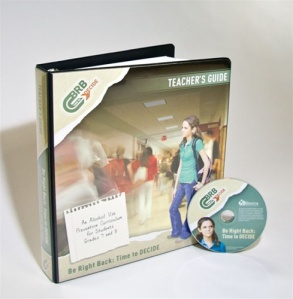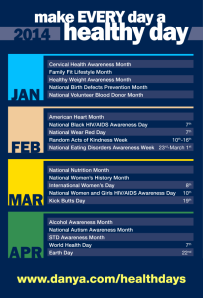 Dr. Temple Grandin, animal behavior expert and author of The Autistic Brain, once stated, “I am different, not less.” Danya International has believed in this sentiment from our very beginning. Many of the Small Business Innovation Research (SBIR) grants that we received throughout our early years focused on how to help facilitate inclusion and communication with the autism spectrum disorder (ASD) community.
Dr. Temple Grandin, animal behavior expert and author of The Autistic Brain, once stated, “I am different, not less.” Danya International has believed in this sentiment from our very beginning. Many of the Small Business Innovation Research (SBIR) grants that we received throughout our early years focused on how to help facilitate inclusion and communication with the autism spectrum disorder (ASD) community.
Since 2002, we have developed and evaluated a number of educational products for individuals with ASD and their caregivers, peers, professionals, and advocates who work with them. Our goal was to create products that would help build effective communication and listening skills within the ASD community, advocate for social inclusion in the general education system, and support the emotional and behavioral health of individuals with ASD.
As we began researching best ways to reach our target audiences with our programs and products, we realized that, while many websites offered products and information about autism, we could not find one online resource for individuals to go to find research-based, high-quality products that meet the needs of individuals with ASD.
 So Danya decided to become what we were looking for. In 2009, we took over management of AutismOnline, a site started by the parent of a young girl with autism. This parent’s vision of a website that would provide resources on a global scale to people with autism and their caregivers fell in line with our own ideas for an online ASD community.
So Danya decided to become what we were looking for. In 2009, we took over management of AutismOnline, a site started by the parent of a young girl with autism. This parent’s vision of a website that would provide resources on a global scale to people with autism and their caregivers fell in line with our own ideas for an online ASD community.
AutismOnline was the first website of its kind devoted to providing research-based, effective, high-quality resources, products, and information on ASD across the lifespan. It also is a place where parents and caregivers of children and individuals with ASD can visit and know they are not alone. Visitors can access the Caregiver Community, an online community where autism caregivers can find information and connect with other autism caregivers.
Our mission to provide products for all individuals within the ASD community makes AutismOnline a unique and extensive resource. We provide information divided into four age categories: young children with autism, children with autism, young adults with autism, and adults with autism. Within these categories, we provide handouts, activities, and links to external websites and organizations.
We also offer our line of ASD-related products, which we have painstakingly designed to target the unmet needs of this growing population. Some of our more recent products include:
 Charting the Course, a curriculum designed to help parents of adolescents with an ASD from ages 10 to 18 years to support and educate their children in learning the skills needed to navigate sexual health, sexuality, and relationships. Charting the Course includes a 315-page Parent’s Guide that contains chapters on topics such as puberty and personal hygiene, relationships, sexuality, and sexual health. Also included is a complementary interactive game, Boardwalk Adventure, designed to help adolescents solidify learning about sensitive topics, such as puberty and personal hygiene, friendships and relationships, dating etiquette, and sexuality-related topics in an interactive and fun way.
Charting the Course, a curriculum designed to help parents of adolescents with an ASD from ages 10 to 18 years to support and educate their children in learning the skills needed to navigate sexual health, sexuality, and relationships. Charting the Course includes a 315-page Parent’s Guide that contains chapters on topics such as puberty and personal hygiene, relationships, sexuality, and sexual health. Also included is a complementary interactive game, Boardwalk Adventure, designed to help adolescents solidify learning about sensitive topics, such as puberty and personal hygiene, friendships and relationships, dating etiquette, and sexuality-related topics in an interactive and fun way.
 Caring for Caregivers, an education and support group curriculum designed for professionals or paraprofessionals to use to help caregivers of individuals with autism across the lifespan reduce the stress, burden, depression, and anxiety related to caregiving. This four-part program is designed for groups of caregivers of: young children, school-aged children, adolescents and young adults, and adults with ASD. Each individual program contains a Facilitator’s Guide, Participant Workbook, and audiovisual program. Caregiver Community is a complementary website that visitors can use to find and share resources with other caregivers in their Caring for Caregiver groups or in their local community.
Caring for Caregivers, an education and support group curriculum designed for professionals or paraprofessionals to use to help caregivers of individuals with autism across the lifespan reduce the stress, burden, depression, and anxiety related to caregiving. This four-part program is designed for groups of caregivers of: young children, school-aged children, adolescents and young adults, and adults with ASD. Each individual program contains a Facilitator’s Guide, Participant Workbook, and audiovisual program. Caregiver Community is a complementary website that visitors can use to find and share resources with other caregivers in their Caring for Caregiver groups or in their local community.
These products and many more can be found on AutismOnline.
In addition to our SBIR work, Danya recently assisted the Centers for Disease Control and Prevention in a holistic evaluation of their Learn the Signs. Act Early. program, which aims to improve early identification of children with autism and other developmental disabilities so children and families can get the services and support they need. We also have been helping to fill a need among Tribal communities, where resources are scarce, by giving out copies of our AutismVision: Creating Autism Awareness in Elementary School Staff curriculum during Head Start-related workshops. Our workshop attendees have provided excellent feedback for our much-needed assistance to these communities.
As Dr. Grandin and so many others with ASD prove consistently, those who are “different, not less” can make extraordinary contributions to society—it is up to us as their advocates, friends, and family to make sure they have the chance. For this reason, Danya has been deeply committed to our efforts to enhance and support the lives of children and adults with ASD as well as their community.
 This program was developed to foster the social inclusion of children and teens with autism, high-functioning autism (HFA), and Asperger syndrome in general education classrooms. The program consists of multimedia packages designed to reach children ages 8 to 11 and teens ages 12 to 15. The goals of AutismVision are to: increase typical children’s and teens’ understanding of autism, HFA, and Asperger syndrome; foster empathy and positive attitudes toward classmates with autism, HFA, and Asperger syndrome; and promote positive social interactions between children and teens with autism, HFA, and Asperger syndrome and their typical peers. This audiovisual program provides classmates with comprehensive, developmentally appropriate information about autism, HFA, and Asperger syndrome. Facilitator’s guides provide instructions for teachers or other advocates on how to implement the classroom presentation effectively, along with suggested activities to reinforce main learning points.
This program was developed to foster the social inclusion of children and teens with autism, high-functioning autism (HFA), and Asperger syndrome in general education classrooms. The program consists of multimedia packages designed to reach children ages 8 to 11 and teens ages 12 to 15. The goals of AutismVision are to: increase typical children’s and teens’ understanding of autism, HFA, and Asperger syndrome; foster empathy and positive attitudes toward classmates with autism, HFA, and Asperger syndrome; and promote positive social interactions between children and teens with autism, HFA, and Asperger syndrome and their typical peers. This audiovisual program provides classmates with comprehensive, developmentally appropriate information about autism, HFA, and Asperger syndrome. Facilitator’s guides provide instructions for teachers or other advocates on how to implement the classroom presentation effectively, along with suggested activities to reinforce main learning points. The Adolescent Smoking Cessation Escaping Nicotine and Tobacco (ASCENT) program is a fun, engaging way to help youths understand social influences and learn refusal skills. Approximately 70 percent of smokers 12 to 17 years of age consider themselves addicted to cigarettes. Yet, there are very few resources that specifically target teen smokers. Cessation tools that help adults stop smoking aren’t always developmentally appropriate for teens.
The Adolescent Smoking Cessation Escaping Nicotine and Tobacco (ASCENT) program is a fun, engaging way to help youths understand social influences and learn refusal skills. Approximately 70 percent of smokers 12 to 17 years of age consider themselves addicted to cigarettes. Yet, there are very few resources that specifically target teen smokers. Cessation tools that help adults stop smoking aren’t always developmentally appropriate for teens.  This multimedia comprehensive curriculum educates 7th and 8th grade students about the risks of teen alcohol use and to prevent initiation of alcohol use among teens. Designed to correspond with the National Health Education Standards, this innovative curriculum provides all the information and resources needed to teach students about how alcohol affects teen bodies and brains, including their ability to make decisions. This DVD-based curriculum also provides a powerful tool to help teens lean and practice the steps to making decisions in difficult situations involving alcohol.
This multimedia comprehensive curriculum educates 7th and 8th grade students about the risks of teen alcohol use and to prevent initiation of alcohol use among teens. Designed to correspond with the National Health Education Standards, this innovative curriculum provides all the information and resources needed to teach students about how alcohol affects teen bodies and brains, including their ability to make decisions. This DVD-based curriculum also provides a powerful tool to help teens lean and practice the steps to making decisions in difficult situations involving alcohol.










